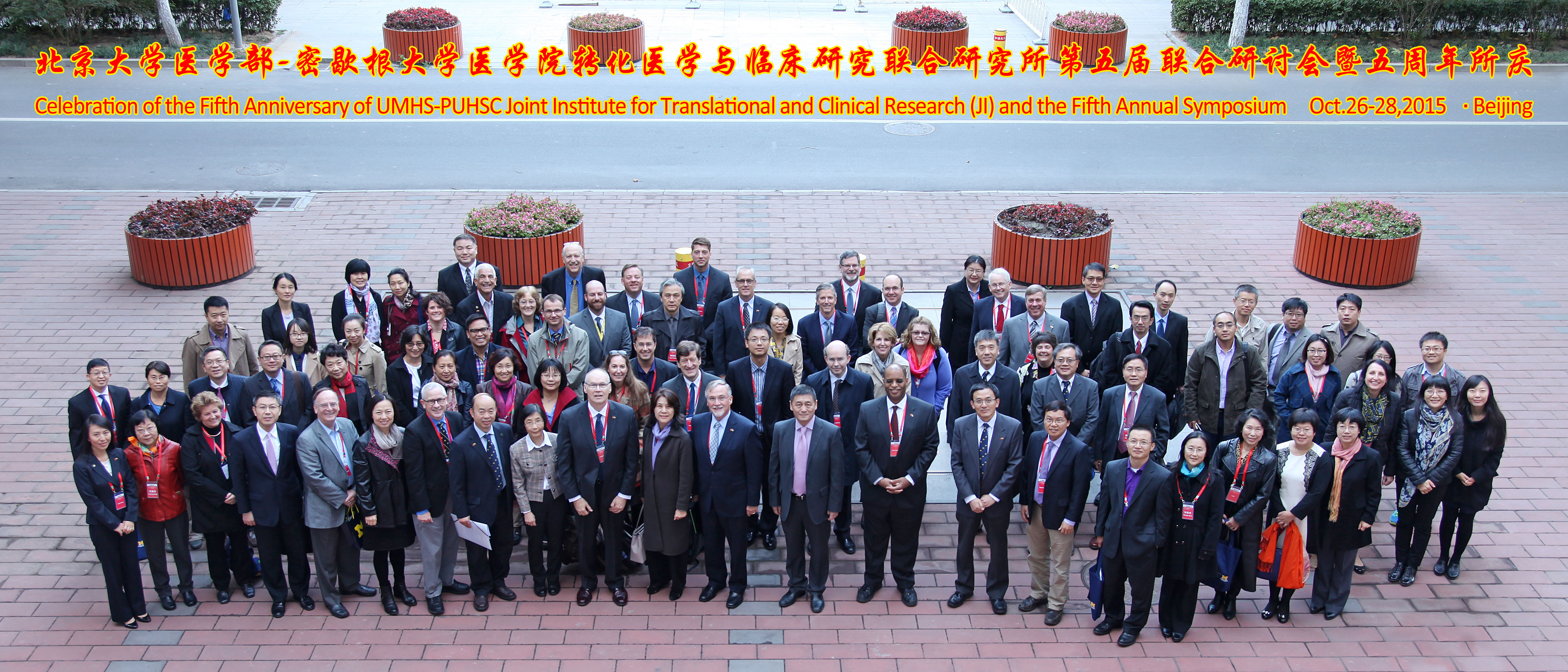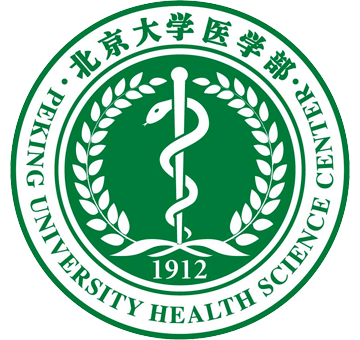The fifth annual JI Symposium took place Oct. 26-28, 2015 in Beijing. More than 50 faculty investigators from Michigan Medicine attended.
Presentation Abstracts
In Pursuit of Disease Drivers across Continents and Disciplines: Tales from a Renal Road Warrior
Matthias Kretzler, MD
Professor of Internal Medicine, UMMS
In biomedical research, we are on the verge of delivering the promise of molecular medicine. Disease processes can now be defined in mechanistic terms in patients, tested for causality in model systems and evaluated in clinical studies that test molecular targeted therapies. To fully realize this unique opportunity for our patients, we must break down the geographic and academic barriers that currently limit our work.
Using the renal research program in the JI as a case study, I will describe the key determinants of our effort to establish a transcontinental, interdisciplinary research pipeline to study molecular regulatory programs in human renal disease; these determinants range from the development of a sharable, standardized clinical and sample procurement protocol for integrative –omic analysis to a robust bioinformatics analysis pipeline capable of linking geographically-dispersed research expertise. This model allows the establishment of independently governed, but closely linked cohort studies for molecular disease definition in China (Joint Renal Institute PKU-UM), Europe (ERCB, EURenOmics), North America (CPROBE, NEPTUNE), and sub-Saharan Africa (H3-CKD-Africa). Harmonization of sample procurement and data acquisition between these cohorts enables researchers to capture the regulatory continuum of renal disease in the specific local genetic and environmental context. A critical step to ensure engagement of the disparate research communities has been the development of effective data-sharing and mining tools in renal systems biology. These tools solidly link domain experts around the globe who focus on the shared challenges, independent of geographic or academic home. Access to renal disease cohorts on four continents with their genetic and environmental diversity allow us now to identify the impact of diverse disease mechanisms on the regulatory pathways in renal tissue, showing in many instances that we share much more than what divides us. The deeply phenotyped observational cohorts that are accessible around the globe are critical assets for the final step of the translational pipeline; they provide the needed infrastructure for interventional trials that will rapidly test biomarkers and novel or repurposed compounds in CKD to meet the challenge of this global epidemic.
Hematologic Malignancy Development from China Perspective: Past to Present
Xiaojun Hunag, MD
Peking University Institute of Hematology
During the past decades, Chinese patients benefited from the developments of hematological malignancy therapy in the world, Chinese doctors also contributed to the global progressions. Acute promyelocytic leukemia was once a highly fatal malignancies, Chinese doctors had made special contributions by introducing targeted therapy which included all-trans retinoic acid and arsenic acid for APL. Recently, it had been proved by prospective, multi-Center, randomized, controlled study of China that oral realgar-indigo naturalis formula achieved comparably high rate of remission and survival to intravenous arsenic trioxide as a front-line treatment in newly diagnosed APL, promoting the new era “Cure leukemia in out-patient department”. Although acute myeloid leukemia (AML) with t(8;21) generally has a favorable prognosis and there is no room for HSCT in NCCN guideline, it is a heterogeneous disease. Both KIT mutation and minimal residual disease (MRD) could discriminate high-risk relapse patients, who may need more aggressive therapy, such as HSCT . It‟s proved by two prospective, multi-center study of China that MRD was more predictive of relapse risk than c-KIT mutations, and MRD directed risk stratification treatment may improve the outcome of t(8;21) AML in CR1. The introduction of tyrosine kinase inhibitors (TKIs) and standardization of BCR-ABL monitoring had generally improved the management of CML in China. The molecular response evaluated by BCR-ABL (IS) can better differentiate patients than that by the log reduction method and allow comparison among molecular response results from different laboratories. Substantial progress has been made in optimization of therapeutic strategy for CML: in prospective studies of China, imatinib results in comparable or better outcomes than an HLA-identical sibling transplant as initial therapy for CML-CP, while allo-HSCT confers significant survival advantages for high- and intermediate-risk patients with AP-CML compared with imatinib. Due to the “One Child Policy”, there has been a shortage of HLA-identical siblings for Chinese patients who need HSCT; Therefore haplo-HSCT based on related family donors has a unique role in the treatment of hematologic disease in China. Peking University researchers developed a novel approach for HLA-mismatched/haploidentical myeloablative blood and marrow transplantation without in vitro T cell depletion within the past 10 years (Beijing Haplo-HSCT System). Haplo-HSCT has similar therapeutic effect compared HSCT with HLA matched sibling donor (MSD) or matched unrelated donor, and can improve the outcomes of children with hematologic malignances compared with umbilical cord blood transplantation. In addition, Haplo-HSCT can achieve desirable Health-related quality of life (HRQoL) and lower risk of late effects compared with MSD HSCT. Haplo-hsct is superior to chemotherapy as post-remission treatment for intermediate or high risk AML or ALL in CR1. Haplo-identical HSCT has become the most important alternative to MSD HSCT and take more than 30% of total allo-HSCT cases in China. Beijing Haplo-HSCT system has changed the current situation of global HSCT system. In summary, collaborations between China the World have always been Important in fighting against hematologic malignancy.





